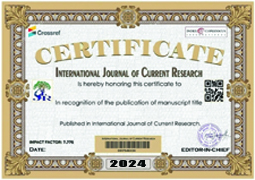Promotion of trade across the nations can be stated as one of the significant developments of the post war period which have brought paradigm shift in global economy. Wave of change that swept the globe since the last decade of 20th century marked a new era of economic integration. Freer multilateral movement of goods and services has been strengthened with the emergence of the WTO. In addition formation of regional trading blocs has minimised trade barriers amongst member nations. The landlocked India’s North East although have enormous potential to grow with economic integration continued to remain a pocket of development in pre and post independence period. Although India has adopted its look east policy in early 1990s as a part of its foreign policy, the north eastern region of India, often touted as the gateway to east, itself has not been given much attention. Studies has claimed that pre and post liberalisation period do not seem to have benefitted proportionately India’s North-East in the fields of agriculture, industry, trade and commerce compared with other regions of India. Geographical remoteness, infrastructural deficiencies, ethnic conflict and militant activities are the reasons for unpopularity of investment in North East region. With the popularity of cross-border economic ties in many parts of the globe, expectations from border trade has become high in this region. The centrality of the region and its strategic location supports India’s growing economic links not only with ASEAN but also with neighbouring countries like Bangladesh, Bhutan and Nepal. From the present study it can be inferred that though India has continued to enjoy comparative advantage1 in the international trade of merchandise product with ASEAN and SAARC, however the country has registered negative growth in the volume of formal trade (net trade) during the last decade or so. A similar circumstance has been observed for India’s trade at formal level with Bangladesh, Myanmar, Bhutan and Nepal. For all these four countries formal trade has remained favorable in merchandise product for India however there has been a decline in both export and import intensity of India’s merchandise trade with the four nation’s in later half of last decade with export intensity declined faster than import intensity. Some of threats for promotion of trade in the regions are like, persistent dumping policy of bordering nations towards India, the increasing volume of informal trade, exchange rate problem with Myanmar currency, low level of capital formation and low private sector investment, absence of a supporting market structure and adequate institutional finance structure, low technology spread. Hence, the central and state Governments should look into the matter to find out ways for overcoming such problems and undertake deliberate measures in the wake of increasing importance of border trade for the country in general and North Eastern region in particular. Efforts of DoNER since 2001 has helped Socio Economic upturn in the region to some extent. Announcement of Vision 2020 has unveiled roadmap for development of the region. Besides improving the physical infrastructure, the planners at the central level and in the North East should think about improving the cross border interaction by developing monitoring mechanisms on transactions across border, opening up of sea route, improving institutional finance structure for setting up of large scale industries, creation of infrastructure for attracting investment and capital formation. With such revival India’s on-going and already concluded regional, sub-regional and bilateral trade agreements with South and South East Asia, it can effectively harness the trade potential and economic advancement of the region in particular and country in general.





